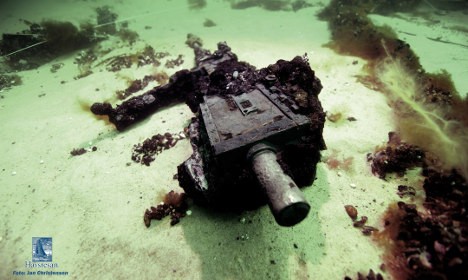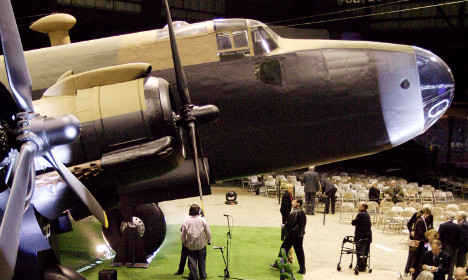The wreckage of the Canadian Halifax HR871 made global headlines when it was found off the coast of Falsterbo in southern Sweden four years ago. The bomber dived into the sea in 1943 when bad weather forced its seven-man crew to abandon the aircraft during a Nazi raid.
The date for its recovery has now been set. The Swedish Coast and Sea Center (SCSC), Lund University researchers, Trelleborg port authority and members of the Canadian Halifax 57 Rescue group are scheduled to start the process of bringing it to the surface on Tuesday, August 16th.
The parts will then be transported to the harbour in Trelleborg to be cleaned and preserved. Jan Christensen, an underwater photographer and member of the SCSC, told The Local in April that he would not be surprised if divers discover even more parts, currently covered by sand dunes.
“The work is weather dependent and our back-up dates are August 23rd-24th,” read a press release e-mailed to The Local.
Almost 11,000 Canadians were killed carrying out around 28,000 Halifax bomber raids during the Second World War. After the war ended, the planes were all destroyed and melted down to be used for construction. Only one has been recreated in Canada, using parts from other crashed aircraft in Norway and Belgium.
Financed through donations, the Bomber Museum Command of Canada now hopes to use the parts to be salvaged in Sweden to build a second replica of one of the world's most iconic bomber planes. It received permission from the Swedish government earlier this year to carry out the recovery operation.
“There's been a lot of stories written about this in Canadian media, there's a lot of interest,” Christensen told The Local in April. “It's really exciting. It's great that we're allowed to dig through history like this.”
INTERVIEW: Veteran tells of Halifax WW2 crash in Sweden

The Halifax's machine gun on the seabed. Photo: Jan Christensen/SCSC
The Halifax was struck by lightning on a mission in Nazi Germany on August 3rd, 1943, and lost two of its four engines. It went down in the sea off Falsterbo after the seven-man strong crew, who all survived, decided to steer the plane north and ditch it in neutral Sweden.
One of the soldiers on board, who famously crashed into a cow when he landed in a field in Skåne county, told The Local in 2012 about his memories of the night of the crash.
“The prospect of ditching in the North Sea or being attacked by a night fighter were not worth considering, being unable to avoid with any evasive action,” veteran John Alwyn Phillips explained at the time. “So with varying degrees of enthusaism it was generally decided to at least make an attempt at reaching Sweden.”


 Please whitelist us to continue reading.
Please whitelist us to continue reading.